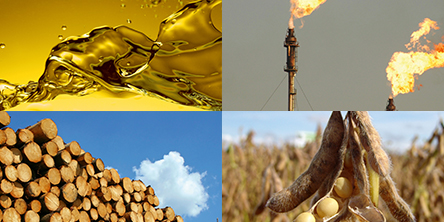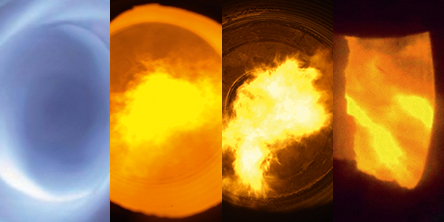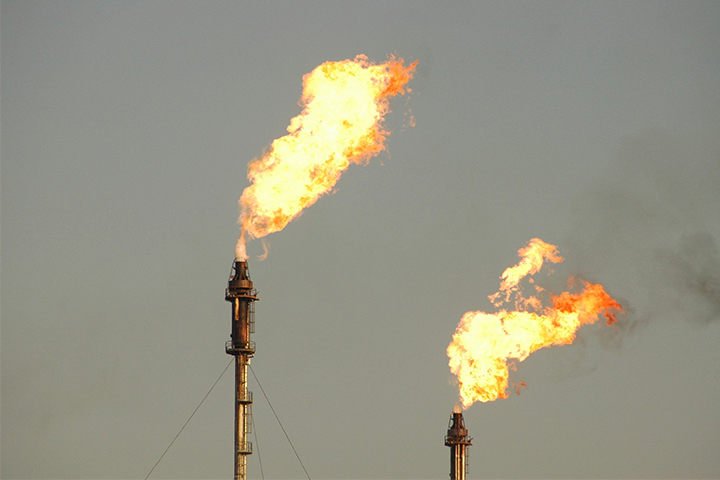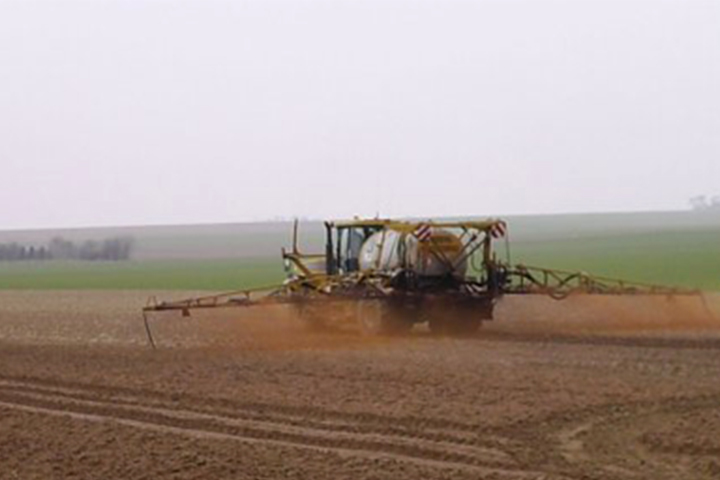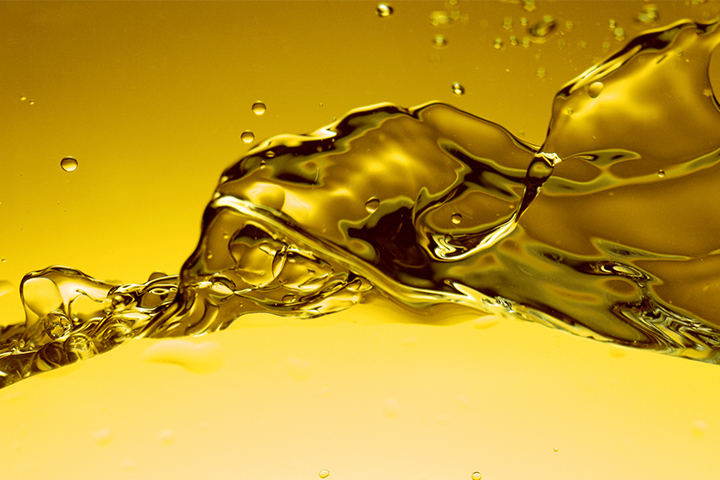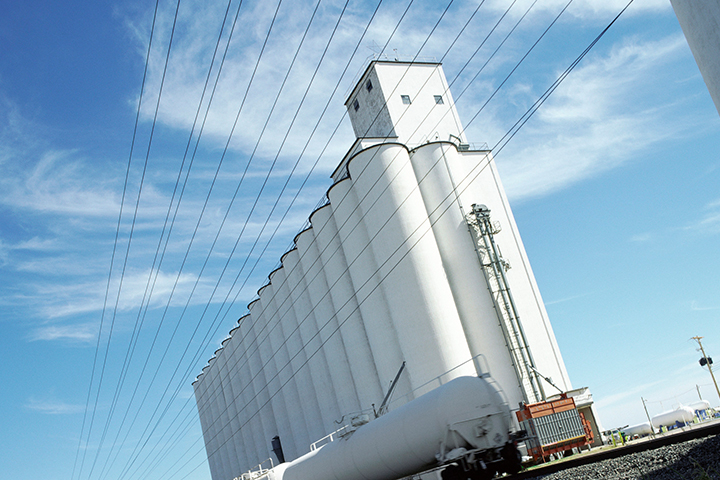Fuels
Gas and fuel oil have been and still are important cornerstones of reliable and affordable heat supply, but, in view of stricter ecological requirements, SAACKE places special emphasis on the use of alternative fuels as well. By-products or residues from industrial processes with both high and low heat values, for example glycerin from biodiesel production, biogas or wood sanding dust, can be used with SAACKE burners. In this manner, residues replace fossil fuels, saving energy and disposal costs – all thanks to low emission low NOx burners.
The EU has set itself the goal of becoming climate-neutral by 2050. According to current knowledge, the widespread use of hydrogen can play a decisive role in achieving this goal and is therefore currently enjoying great media and political interest. Particularly in the area of industrial heat generation, the thermal use of green hydrogen represents a realistic alternative to fossil fuels.
Hydrogen as a fuel is not new territory in industrial heat generation. For example, hydrogen produced as a by-product in chlor-alkali electrolysis is already being burned on an industrial scale using forced draught burners. The first plants of this type from SAACKE were commissioned as early as 1981. Until now, such applications have been special plants with a high demand for individual engineering. Hydrogen as a fuel places additional demands on the burner as well as the connected systems. Numerous hydrogen projects have been successfully implemented so far. From a small admixture of hydrogen in natural gas up to 100 % hydrogen content. Depending on the requirements, different burner types are used.
All SAACKE burners are already able to process up to 20 % H2 admixture in natural gas without any problems. If the H2 content is larger (up to 100 %) and fluctuating, our burner series SSB and ROTONOX are also suitable and proven for this purpose. By the way: A mixed firing of hydrogen and natural gas (or also EL fuel oil) with variable proportions is also possible and often in use. This also means that the customer can switch back to the "reserve fuel" of natural gas, biogas or heating oil at any time in the event of supply bottlenecks with hydrogen.
And of course, even with 100% H2, SAACKE burners comply with all NOx limits and in some cases fall significantly below them (> 50%). In general, standard gas burners in operation with 100% hydrogen show 3x higher emissions than in natural gas operation.
While natural gas is a fundamental component of worldwide energy supply, substances with low heat values such as lean gas represent niche products.
The group of lean gases includes furnace gas, formalin gas, vent gas, corex gas and CO gas. These gases accumulate for example in steel production, in the chemical industry or in other processes and pose great challenges for combustion systems.
Unlike natural gas, lean gases frequently consist to a considerable extent of inert gases such as nitrogen, carbon dioxide or steam. The combustible ingredients, for example carbon monoxide or hydrogen, typically make up only about 25% by volume. Their heat value ranges from 2 – 15 MJ/m³, considerably lower than natural gas. This means that significant volumes of gas are needed to replace natural gas firing. Furthermore, because these gases are usually available at only a very low pump pressure, lean gases often cannot be utilized thermally. Instead they are flared off.
An SSB-LCG from the SSB swirl burner series is available for economical utilization of lean gases. It was specially developed for low-caloric gases and combusts even gases with a heat value of just 2 MJ/m³ reliably and without an expensive support fuel. The burner also features a low pressure requirement of only 10 mbar.
In addition to the standard fuel natural gas, there is a whole series of special gases that are often flared off or combusted with the aid of a support fuel. Typical gases in this group include landfill gas, sewer gas, refinery gas, coal mine gas, vent gases and coke gas. They can all be utilized thermally with no problem, but they do place increased demands on the combustion system.
In contrast to lean gas, these gases have an appreciable energy content at more than 15 MJ/m³, making utilization easy to implement. However, they are available in fluctuating quantities or with fluctuating heat values. A good example are vent gases from fuel storage plants. The tank contents consist of volatile, highly flammable hydrocarbons. Because of this, the tanks must be rendered inert with nitrogen during refueling. Therefore the volume and amount of gas fluctuate during loading and unloading and the composition of the gas also fluctuates between pure fuel gas and pure nitrogen.
While the combustible ingredients of refinery gas consist of hydrogen to butane, methane is the main ingredient of landfill gas, sewer gas and coal mine gas. They also contain appreciable portions of carbon dioxide and nitrogen.
All the gases listed here require a heat value measurement in the gas valve train to record the actual, current heat value and transfer it to the burner control unit. In this way the burner will then receive the correct amount of air or additional natural gas as well to combust the special gas cleanly and with priority. If necessary, by-products that accumulate in the process can also be used at this point, for example residual oils from refinery operation can be combusted in parallel.
SAACKE offers two solutions for economical utilization of special gases: The TF-DDZG steam pressure atomizer series and the SSB-LCG swirl burner series. Their proven technology reliably utilizes even difficult gases with very low pump pressure, for a positive effect on both the budget and the environment.
Liquid industrial by-products often contain only a small amount of energy. They have a high water content and disposing of them is expensive. Examples include soy molasses from food production or vinasse ("spent wash") from bioethanol production. With a water content of about 50% in the already concentrated solution and only 40% organic components, molasses and vinasse are usually a significant environmental problem. They are disposed of as liquid manure on agricultural fields – with drastic consequences for groundwater and air.
In the chemical industry, ACN polymer solutions and waste water concentrate with a high content of phenolic resin also belong to the group of liquids with low heat values that cannot be utilized with conventional combustion systems. For example, an ACN polymer solution from plastic production contains an additional 10% organically bound nitrogen, while the waste water with phenolic resin content consists about 90% of water.
In summary, heat values of these liquids, for example 7-10 MJ/kg for concentrated vinasse, are very low while the viscosity, 45 cSt at 100°C in some cases, is frequently problematic. Furthermore, a good deal of ash with a low melting point is produced during the combustion of vinasse and molasses, which makes a special boiler design necessary. Despite these problems, the substances named above can be used thermally, thereby creating a win-win situation that has a positive effect on both the budget and the environment.
In the case of vinasse and molasses, this not only saves considerable quantities of primary energy, but also produces large amounts of valuable fertilizers with the ash, improving the ecological balance sheet in two ways.
The SAACKE SSB-LCL is based on the proven SSB swirl burner and has an adapted burner muffle that makes it possible to use problematic substances as well. This burner can be adapted to a wide range of liquids and operated with different additional fuels. It guarantees maximum availability with the lowest emission values.
In addition to the standard fuels, light oil and heavy oil, there is also a series of liquid substances containing sufficient energy, with a heat value of more than 15 MJ/kg, to make thermal utilization worthwhile.
These include for example:
- Animal fat
- Canola oil
- Soy oil
- Palm oil/grease
- Fish oil
- Glycerin
- Frying grease
- Biodiesel
- Sulfur
- Silicon oil
- Numerous unpurified by-products of the chemical industry such as biphenyl acetate (BPA), styrene and toluene
While some of these substances are produced specially for thermal utilization, many accumulate as by-products or are even real "problem substances" that burden the ecological balance and must be disposed of. They all have a high heat value, but differ in their chemical and physical properties. For example, many special fuels must be preheated to reach a suitable viscosity for combustion or even to become liquid at all. Many are unpurified and due to their fluctuating chemical composition they place high demands on the combustion system.
An ROTNOX GL from the rotary cup atomizer series would be a good choice in this case. Because parts in contact with media are made of stainless steel, it is able to utilize even high-viscosity and unpurified liquids with a high acid index reliably and ensure the best possible emission values with outstanding burnout.
No matter which burner is used for which fuel, utilization of special fuels is generally a profitable investment, especially if the substance previously had to be disposed of in an expensive process or with the use of an auxiliary fuel instead of producing energy. The new energy source not only provides relief for the budget, but also for the environment.
Biogenic fuels are biological/organic in origin. They may therefore be derived from plants or may be a product of fermentation or digestion of organic materials. Chemical and physical properties vary considerably depending on the fuel. For example, some substances are solid at room temperature, while others are liquid or gaseous.
Typical biofuels include:
- Canola oil
- Soy oil
- Palm oil
- Biodiesel
- Biogas
- Bio natural gas
- Sewer gas
- Gas from biomass gasification
- Wood dust
They have in common a high heat value of more than 15 MJ/kg (15 MJ/m³) and a CO2 balance for combustion. If sewer gas or bio gas was previously being released with no controls, thermal utilization can relieve an even greater climate burden: These gases contain methane, which is harmful to the climate and which is converted into CO2 during combustion.
Although the combustion of canola oil, soy oil or biodiesel works similarly to the use of light or heavy oil to a great extent, each individual fuel places great challenges on the combustion system: All these substances differ in their heat value, pour point, viscosity and combustibility. Because palm oil is solid at room temperature, it must be preheated, more or less depending on which burner is used, so that it can be pumped and atomized. These mostly biogenic liquids also contain a certain amount of free fatty acids, which have a very corrosive effect. In this case, all parts in contact with the fuel must be made of stainless steel.
Biogenic gases also differ greatly between themselves. They contain either hydrogen or methane as the main combustible component. They also contain nitrogen and may fluctuate greatly in their composition. This fluctuating composition together with discontinuous occurrence of the gas requires exact monitoring of the heat value as well as precise and rapid control of the amount of air, biogas and other fuels.
In addition to the SSB swirl burner series or the DDZG steam pressure atomizer series, the ROTONOX rotary cup atomizer series can also be used for combustion of biogenic fuels. The TEMINOX GL pressure atomizer series is also suitable for use if light fuel oil will be used in addition to biogas as a second fuel.
Incidentally, while wood pellets have now become an established biogenic fuel, use of wood dust for the same purpose is generally overlooked. However, ground wood can be easily, cleanly and very efficiently used to produce energy. The SSB-D swirl burner series is ideal for this purpose: It offers not only especially low emissions and a wide control range, but also the option of utilizing additional fuels.
Whatever burner is used, a decision to use biogenic fuels is always a decision for improved CO2 balance and reliable heat supply in times of fluctuating fuel markets.
Although pulverized fuels represent a very profitable alternative to natural gas or fuel oil, they have not attracted widespread attention. This is especially unfortunate if dust accumulates as by-products in industrial processes and could be directly utilized to replace valuable (and expensive) standard fuels.
Dust in this context refers to a solid substance with a maximum grain size of up to 0.5 mm. Beyond this definition, however, dust may be categorized based on its water and ash content, its heat value and its combustibility, which is directly related to the percentage of volatile ingredients.
For example, pulverized lignite and pulverized anthracite have heat values of 20-22 MJ/kg and 25-30 MJ/kg, which do not differ greatly. However, pulverized lignite has considerably more highly volatile ingredients and is therefore more combustible overall. Petroleum coke may be cited as an extreme example: This pulverized fuel contains only a very small percentage of highly volatile ingredients and therefore places greater demands on the combustion system, despite its high carbon content.
In addition to ground coal, there are also numerous biogenic dusts that can be utilized to produce energy, thus providing double relief for the budget:
- Wood dust / wood sanding dust
- Pulverized sugar beet cossettes
- Canola extraction scrap
- Fermentation substrate
- Coffee husks
The SSB-D swirl burner series can be used for all types of dust. It not only offers a wide control range with maximum burnout, it can also be operated on both combustion chambers and water-tube boilers. It reliably meets even strict emission limit values and impressively demonstrates the possibilities of dust firing.
© SAACKE GmbH 2024
